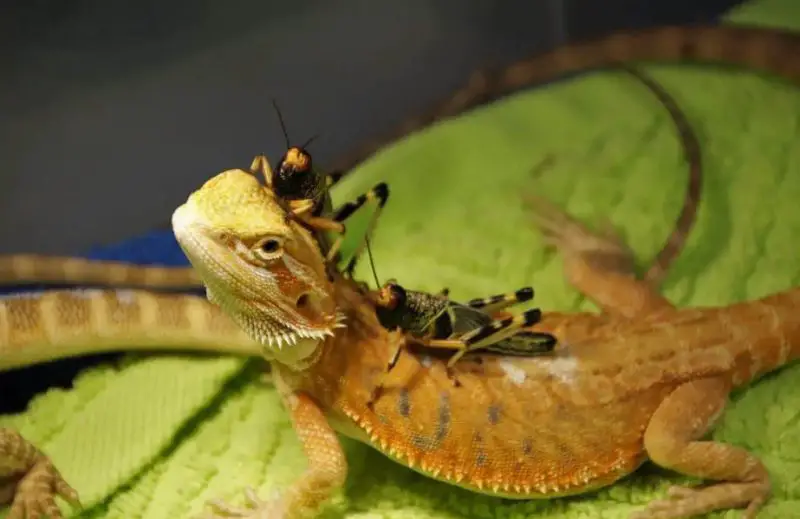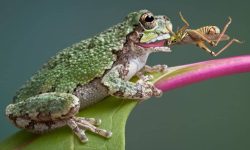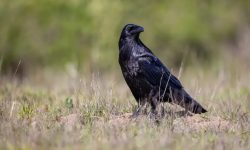Lizards are some of the most adaptable reptiles on Earth, thriving in deserts, jungles, grasslands, and even urban backyards. Their diet is remarkably varied, consisting of insects, fruits, flowers, and even small vertebrates. Whether you’re a reptile enthusiast or a pet lizard owner, understanding what lizards eat is essential to keeping them strong, energetic, and healthy.
Below is the most detailed guide to 20 of the best foods for lizards, including their nutritional value, feeding frequency, and which species benefit most.
Understanding Lizard Diets

Different species of lizards have different dietary requirements. In the wild, their diet depends largely on what’s available in their environment. Some lizards are strict insectivores, feeding mainly on live insects, while others are omnivorous, eating both plants and animals. Herbivorous lizards prefer leafy greens and vegetables, while carnivorous species consume small prey like rodents or fish.
A balanced diet is key to keeping your lizard strong, maintaining its coloration, and ensuring proper bone and muscle development. The right mix of protein, calcium, fiber, and hydration makes all the difference.
20 Best Foods for Lizards
1. Crickets
Crickets are the gold standard when it comes to lizard nutrition. They’re packed with protein and have enough movement to trigger natural hunting instincts, keeping your reptile physically active.
To maximize nutritional value, gut-load crickets with vegetables, fruits, or special cricket feed 24 hours before feeding. Dust them with calcium powder two to three times a week to prevent metabolic bone disease. Most small and medium insect-eating lizards—like geckos, chameleons, and bearded dragons—thrive on them.
2. Mealworms
Mealworms, the larvae of darkling beetles, are protein-rich and convenient to store. However, they have a tough outer shell made of chitin, which can be hard to digest if fed too often.
Use them as part of a mixed diet rather than a staple. For easier digestion, offer freshly molted (white) mealworms. Larger species like monitors and skinks can handle them more regularly, while smaller species should get them as an occasional treat.
3. Waxworms
Waxworms are soft-bodied, high-fat larvae that lizards absolutely love. Their rich texture makes them perfect for encouraging reluctant eaters.
Since they’re calorie-dense, waxworms should be offered no more than twice weekly. They provide an energy boost for young or recovering lizards, but overuse can lead to obesity.
4. Dubia Roaches
Dubia roaches are among the most nutritious and digestible feeder insects available. With a balanced protein-to-fat ratio and low chitin content, they’re easy on a lizard’s digestive system.
They don’t carry parasites, are odorless, and can be bred at home. Perfect for bearded dragons, leopard geckos, and skinks, Dubia roaches can safely make up the bulk of your lizard’s diet.
5. Earthworms
Earthworms are highly hydrating and full of amino acids and minerals. They’re soft, easy to digest, and suitable for semi-aquatic and terrestrial species alike.
Always rinse worms before feeding and ensure they come from pesticide-free environments. For omnivorous lizards like tegus or blue-tongued skinks, earthworms are a top-quality protein source.
6. Silkworms
Silkworms are rich in calcium, protein, and beneficial enzymes. They’re ideal for species that need gentle, easily digestible foods, such as young lizards or those recovering from illness.
They can be offered several times a week and are particularly beneficial for insectivores that need extra calcium without excessive fat.
7. Hornworms
Hornworms are vibrant green caterpillars that add hydration and nutrition to your lizard’s diet. Their high moisture content prevents dehydration, especially in hot climates.
Feed hornworms in moderation, as they’re lower in protein than crickets or roaches. Their color and movement make them an irresistible option for bearded dragons and monitors.
8. Superworms
Superworms are larger relatives of mealworms and a favorite for big lizards. They’re protein-rich but higher in fat, so they should be given occasionally.
Crush the head before feeding to prevent them from biting. They’re ideal for energy-demanding species like tegus and adult beardies.
9. Grasshoppers and Locusts
Grasshoppers and locusts provide excellent enrichment because their jumping stimulates hunting instincts. They’re high in protein and fiber, supporting muscle development and digestion.
Source them from reptile suppliers to avoid exposure to pesticides. They can be gut-loaded for added nutrition and offered to medium or large species.
10. Black Soldier Fly Larvae
Black soldier fly larvae (BSFL) are calcium-rich and perfect for maintaining strong bones. Their natural calcium-phosphorus balance reduces the need for supplements.
They can be fed daily to insectivorous lizards, especially growing juveniles. BSFL are soft-bodied and highly digestible, making them a superior staple.
11. Fruits
Omnivorous lizards like bearded dragons and skinks enjoy a variety of fruits. Choices like mango, papaya, strawberries, and blueberries add vitamins and hydration.
Always remove seeds and cut fruits into small pieces. Feed fruits as treats, about 10% of the diet, since too much sugar can upset digestion.
12. Leafy Greens
Leafy greens like kale, dandelion greens, mustard greens, and collard greens are essential for herbivorous and omnivorous species. They provide fiber, calcium, and antioxidants.
Avoid spinach and iceberg lettuce due to poor nutritional value. Rotate greens frequently for variety and serve fresh daily.
13. Vegetables
Nutrient-dense vegetables like carrots, bell peppers, squash, and zucchini promote digestion and eye health.
Chop them finely or shred them before serving. Offer raw or lightly steamed depending on your lizard’s species. Vegetables should form up to 30% of a herbivorous lizard’s diet.
14. Pinky Mice
Large carnivorous species, including monitors and tegus, can occasionally eat pinky mice. These provide complete nutrition, including calcium from bones and protein from muscle.
Feed pre-killed, frozen-thawed pinkies once or twice a month to avoid overfeeding. Too much can cause fatty liver disease in captive lizards.
15. Snails and Slugs
Snails and slugs are calcium-rich prey that promote bone strength. Many skinks and tegus enjoy them.
Avoid garden snails unless you’re sure they’re pesticide-free. Offer occasionally to add variety to your lizard’s diet.
16. Small Fish
Aquatic or semi-aquatic lizards like water dragons and basilisks often eat small fish such as guppies or minnows.
Feed only healthy, parasite-free fish, preferably frozen or pre-killed. Offer them occasionally as a high-protein supplement.
17. Caterpillars and Moths
Soft-bodied insects like caterpillars and moths offer hydration and variety. These are excellent enrichment foods for chameleons and arboreal species.
Always use captive-bred insects, as wild ones may carry parasites or toxins.
18. Flowers and Blossoms
Edible flowers like hibiscus, nasturtiums, and dandelions add natural color and nutrients. They’re rich in antioxidants and encourage natural foraging.
Offer only pesticide-free blooms in moderation to herbivorous species like uromastyx and skinks.
19. Commercial Pellets
Specially formulated pellets provide balanced nutrition for herbivorous and omnivorous lizards. They contain essential vitamins and minerals but lack the stimulation of live prey.
Use pellets as a supplement to fresh greens and insects, not as a full replacement.
20. Cooked Eggs
Occasionally, you can feed cooked eggs to omnivorous species as a protein boost. Scrambled or hard-boiled eggs are best—avoid salt, oil, or seasonings.
Offer sparingly, about once per month, as an alternative protein source.
Feeding Tips for Healthy Lizards
Feeding schedules vary depending on your lizard’s species and age. Juveniles usually eat daily, while adults can eat every other day. Always dust insects with calcium and vitamin D3 supplements.
Provide clean, dechlorinated water daily, and mist the enclosure regularly for hydration. Rotate foods weekly to avoid nutrient imbalances. Never feed wild-caught prey, as it may contain pesticides or parasites.
FAQs About Lizard Diets
What Foods Should I Avoid Feeding My Lizard?
Avoid avocado, onion, garlic, and fireflies—they are toxic to reptiles. Do not feed processed human food or dairy.
Can Lizards Eat Fruits Daily?
No. Fruits should only make up about 10% of their diet due to sugar content. Stick with insect and vegetable bases.
Do All Lizards Eat Meat?
No. Some are herbivorous (like uromastyx), others omnivorous (like skinks), and many insectivorous (like geckos).
How Often Should I Feed Insects?
Young lizards can eat insects daily. Adults usually need insects every 2–3 days, depending on species and size.
Can Lizards Drink from a Bowl?
Yes, but many prefer licking water droplets. Regular misting helps maintain hydration and humidity.
Conclusion
Lizards thrive on a balanced, varied diet that mimics what they’d eat in the wild. From protein-packed insects to vitamin-rich greens and occasional treats, a proper feeding routine ensures long-term health and activity.
Providing live food keeps your lizard physically and mentally stimulated while maintaining strong bones and vibrant colors. By offering these 20 foods wisely, you’ll help your reptile live a long, energetic, and happy life.






